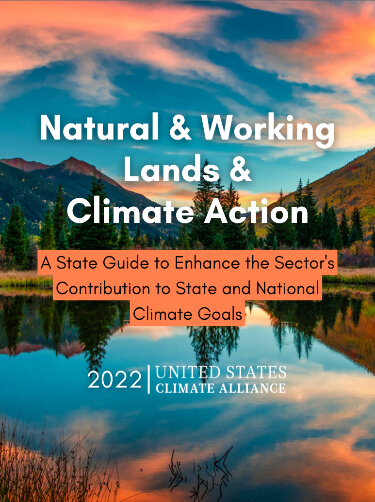Home / Natural & Working Lands & Climate Action

Tags
- Guide
- November 2022
Natural & Working Lands & Climate Action
A State Guide to Enhance the Sector’s Contribution to State and National Climate Goals
Natural and working lands (NWLs) play a key role in the global carbon cycle, contributing both to GHG emissions, as well as GHG reductions and removals by storing carbon in plants and soils. But NWLs are not a guaranteed carbon sink — to capture the full potential of the NWL sector, states can set strategic near- and long-term goals to reduce GHG emissions from NWLs and to maximize the carbon sequestration and storage potential of the sector.
The State Guide to Enhance the Sector’s Contribution to State and National Climate Goals offers sector-specific guidance and dozens of case studies to help integrate NWLs into state climate goals and enhance the role of the sector in both mitigating and adapting to climate change while centering equity, environmental justice, and a just economic transition. The Guide was developed with support from the Doris Duke Charitable Foundation and the J.M. Kaplan Fund.